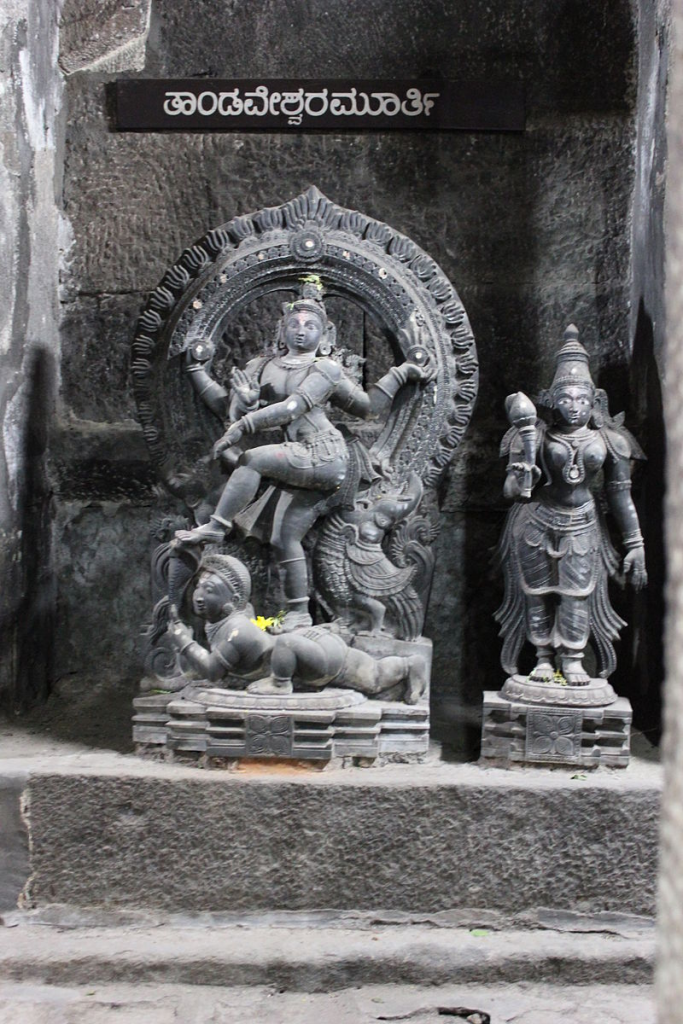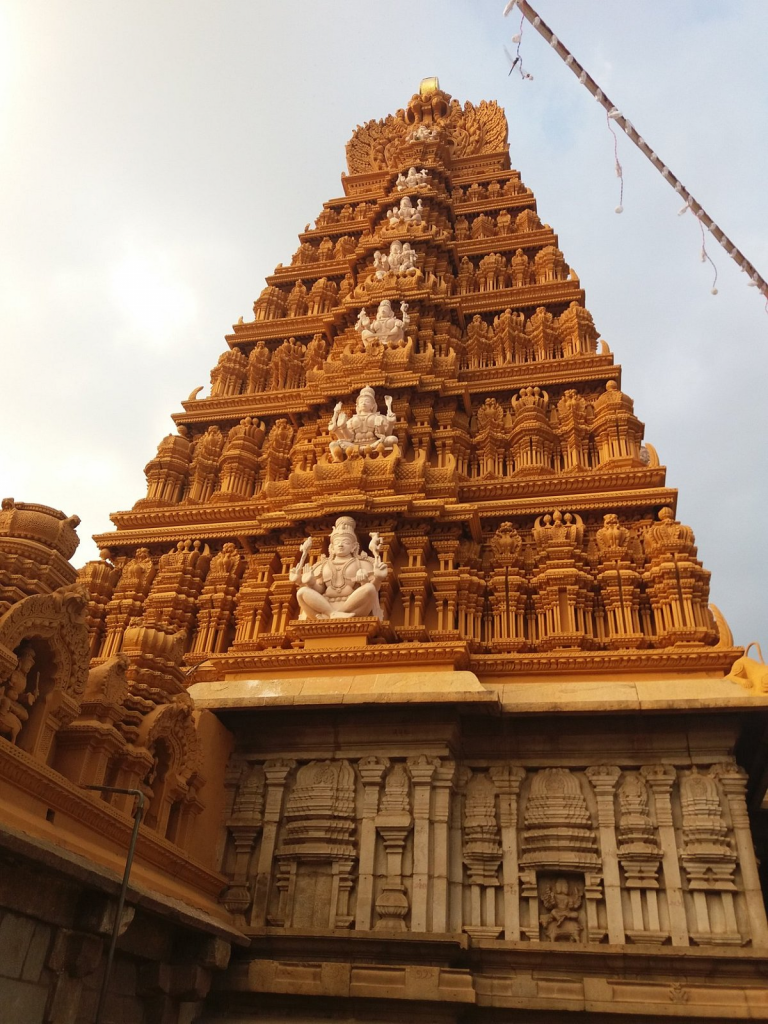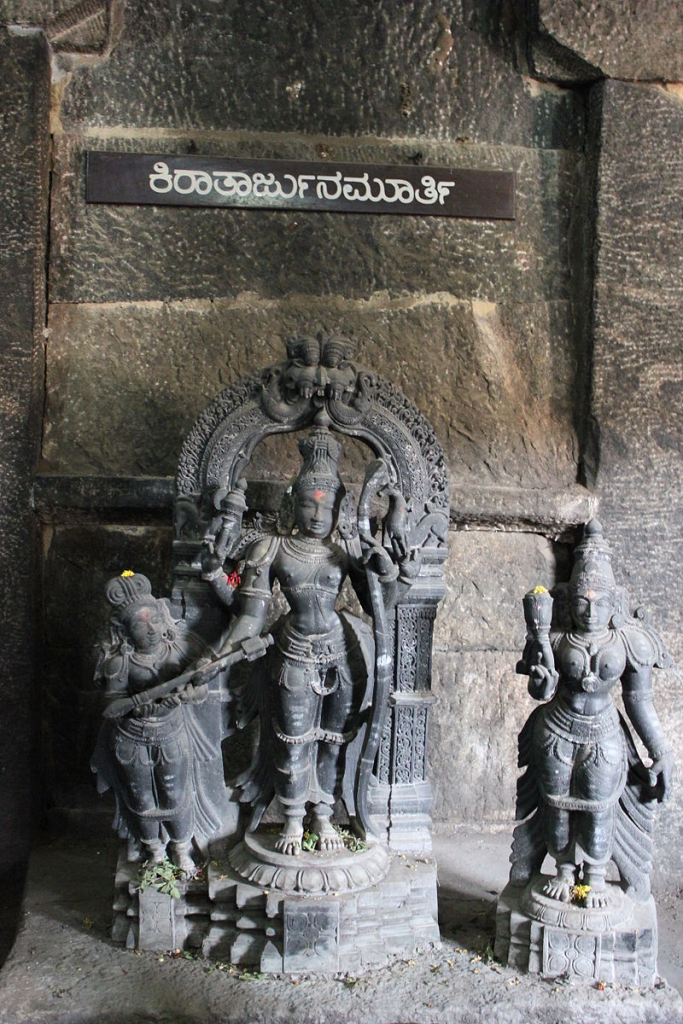
The Nanjundeshwara Temple (also called Srikanteshwara Temple) is an ancient temple in the Hindu pilgrimage town of Nanjanagudu in the Karnataka state of Southern India.

It is known for the ancient temple of the god Nanjundeshwara (another name for the Hindu god Shiva, also known as Nanjundeshwara).
The Nanjundeshwara temple is located in the town on the right bank of river Kapila, a tributary of the Kaveri. Nanjangudu is also known as ‘Dakshina Prayaga’ or ‘Prayag of South’.

Nanju in Kannada means poison; the name Nanjundeshwara means the “God who Drank the Poison” (halahala), a word that has its origins in the legend of the Great Churning of the Ocean of Milk. Thus the town got the name ‘Nanjangudu’ which means “the abode of the god Nanjundeshwara”.
The “Dodda Jaathre” festival at Nanjangud by temple attracts thousands of devotees. The festivities in the fair include five colorful chariots that are pulled by devotees on a path called the Ratha Beedi. Parasurama temple is near to Nanjundeshwara temple.
The 9 storied, 120 feet tall temple Gopuram and its extensive exterior was built by Devarajammanni, the queen of the Mysore king Krishnaraja Wadiyar III.

History
Nanjungud is mentioned as Sri Garalapuri, in the Shiva Purana. It is said that the legendary holy place is an abode of Lord Shiva in southern India. It is also referred to as Dakshina Kasi. Lord Shiva appeared at the plea of his devotees, the Devas and Sage Narada.
The demon Keshi, obtained the boon from Lord Brahma and Lord Vishnu, that they shall not be able to kill him. He assumed, with this boon, he is as good as immortal and began troubling the people, the Devas and the Sages.
Finally, Sage Narada along with the Devas pleaded Lord Shiva to save everyone. Lord Shiva appeared in Garalapuri Sri Kshetra, (present Nanjungud) and killed The demon Keshi.
Lord Shiva assured his Ansh – a part of his divine Self shall always remain here and bless the humanity. Lord Shiva assured this place shall be a ‘papa vinashini’ – remover of sins.
Every human praying to Lord Srikanteshwara or Nanjundeshwara (Lord Shiva) of Nanjungud, after bathing in the holy River of Kabini, will be rid of sins and blessed by Lord Shiva.
Sage Parashuram, after beheading his mother as per his father Sage Yamadagni’s orders, wanted to undo his sins from “Matr Hatya” – mother’s murder.
As per the advice of sage Narada, he reached Garalapuri (Nangangud) prayed to Sri Nanjundeshwara Swamy. Lord Shiva appeared and advised Sage Parashuram to build a Mandap and perform pooja to the Shivling.
While clearing the shrubs with his Parashu – axe, unconsciously Sage Parashuram’s axe hit the Shivling and the tip of the Shivling began bleeding.
Sage Parashuram felt very guilty and said, “I have committed another unforgivable sin, only by killing myself I shall be relieved from all my sins”, and prepared to kill himself .
Lord Shiva appeared and blessed sage Parashuram and told him to apply wet mud upon the Shivling (the mud of Sri Nanjangud has immense healing powers).
The shivling stopped bleeding. Lord Shiva advised Sage Parashuram to build the Mandap and continue his Penance. Finally, Lord Shiva blessed sage Parashuram and relieved him from all his sins and blessed him with immortality.

Goddess Parvati, consort of Lord Shiva wanted to visit this holy place. Lord Shiva brought Goddess Parvati to Garalapuri Nangangud, Devi went to the Kabini river and bent down to touch the water.

A gem stone bead – Mani fell off from her crown into the water. Lord Shiva was pleased and declared, “Devi, until now, the place had my divine blessings and presence, from this moment it shall have your presence, grace and blessings too. It shall also be called as Dakshina Manikarnika Ghat”.

During the reign of King Tipu Sultan, his royal elephant became blind. As per the advice of his minister, Sri Poorniya, Tipu Sultan sent the elephant to the Nanjundeshwara Swamy temple and performed 48 days of rituals.
On the 48th day, the elephant’s vision was restored. Tipu Sultan offered the emerald green Shivling as a token of gratitude to Sri Nanjundeshwara Swamy and called Lord Shiva, “Hakim Nanjunda” (healer).


